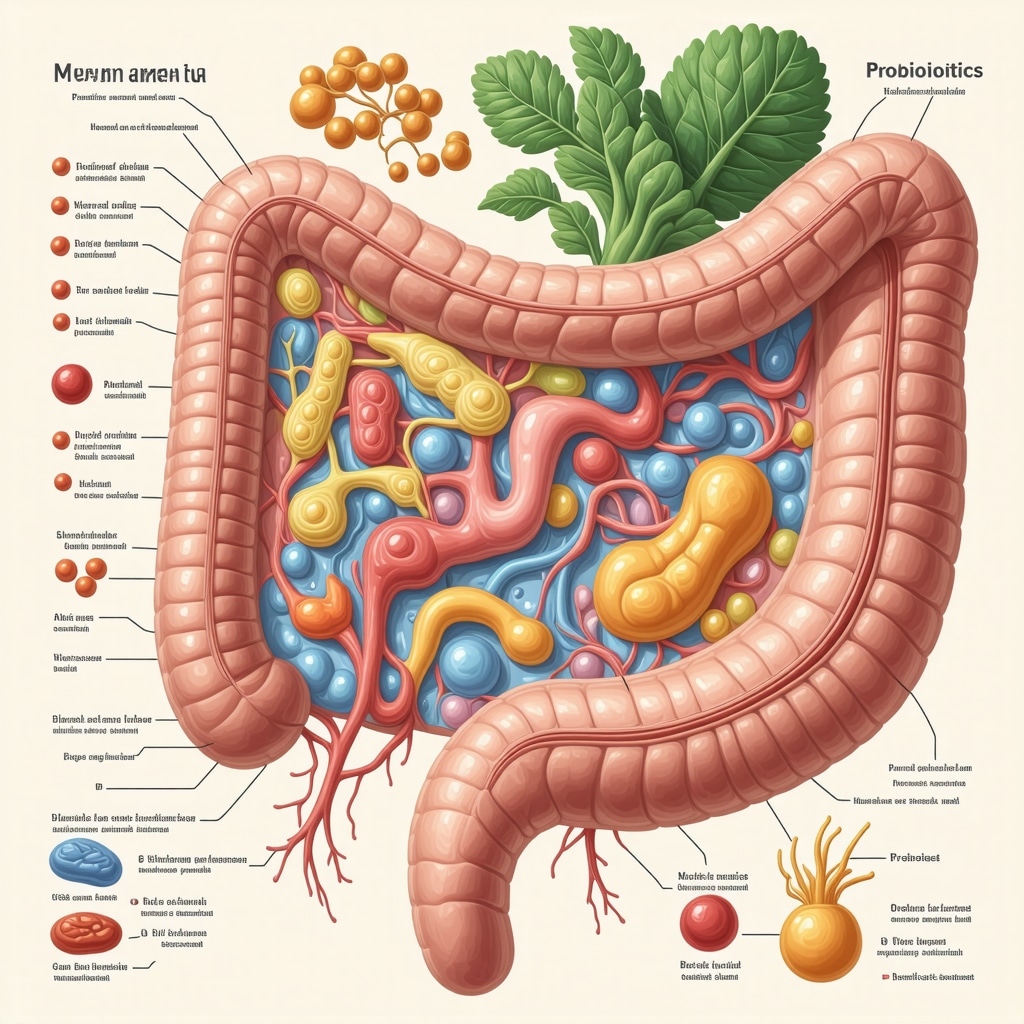Fuel Your Weight Loss Journey: The Surprising Role of Food in Supporting GLP-1 Medications
Imagine this: you’re on a prescription for GLP-1 medications, those miracle drugs like semaglutide that help curb appetite and promote weight loss. But here’s the kicker—your plate can be your secret weapon or your biggest obstacle. Nutrition isn’t just about calories; it’s about strategically choosing foods that amplify the medication’s benefits. Think of it as pairing fine wine with gourmet cheese—when done right, the results are spectacular.
What’s the Fuss About GLP-1? A Quick Digest
GLP-1 receptor agonists are a game-changer in the world of weight management. They mimic a hormone that signals fullness and slow gastric emptying, making you feel satisfied longer. But, as any seasoned dieter knows, medication alone isn’t magic—it’s part of a broader lifestyle. Enter the foods that support and enhance these drugs’ effects, turning your kitchen into a strategic battleground against hunger.
Foods That Make Your Meds Work Overtime
Fiber: The Unsung Hero of Satiety
High-fiber foods like oats, beans, and vegetables slow digestion and keep you full longer. They act like a natural appetite suppressant—who needs chemicals when you have lentils? Incorporating fiber-rich foods can prevent those pesky cravings that undermine your progress.
Protein Power: Building Blocks of Satisfaction
Lean meats, eggs, dairy, and plant-based proteins are your allies. They require more energy to digest, boosting your metabolism while keeping hunger at bay. Plus, they support muscle maintenance—a must when you’re losing weight.
Healthy Fats: The Fat that Fights Hunger
Avocado, nuts, and olive oil provide essential fatty acids, which help stabilize blood sugar and prolong feelings of fullness. Remember, not all fats are foes—smart fats are your friends.
Can Food Really Help Maximize Weight Loss? The Big Question
Absolutely. When paired with GLP-1 medications, a diet rich in fiber, protein, and healthy fats can create a synergy that accelerates fat loss and curbs appetite more effectively. It’s like giving your medication a turbo boost—who wouldn’t want that? For personalized strategies, consulting with a healthcare professional is key. They can help tailor a diet plan that complements your medication regimen, ensuring maximum results.
Ready to Dive Into a Food Plan That Supports Your Weight Loss Goals?
If you’re curious about specific meal plans or want expert tips on combining diet and medication, check out our comprehensive guide on combining diet and medication for optimal results. Remember, your journey is unique, and the right foods can make all the difference.
For more insights, don’t hesitate to reach out via our contact page. Let’s make your weight loss journey not just effective but also enjoyable!
Unlocking the Power of Nutrition: How Food Can Supercharge Your GLP-1 Weight Loss Journey
Ever wondered if your diet could be the missing piece in amplifying the effects of GLP-1 receptor agonists like semaglutide? The answer is a resounding yes. While these medications are powerful tools for appetite control and fat loss, coupling them with the right nutritional strategies can create a synergistic effect that accelerates results. Thoughtfully selected foods don’t just support your medication—they enhance its efficacy, making your weight loss journey more efficient and sustainable.
The Science Behind Food and GLP-1 Medications
GLP-1 receptor agonists work by mimicking a hormone that signals fullness and slows gastric emptying, helping you eat less naturally. But to truly harness their potential, your diet needs to reinforce these effects. For instance, foods high in fiber and protein can prolong feelings of satiety and stabilize blood sugar levels, reducing the likelihood of overeating. Incorporating healthy fats further supports this process by providing sustained energy release and curbing hunger pangs.
Are You Giving Your Body the Right Nutrients to Maximize Fat Loss?
Imagine if your meals could act as a turbo boost for your medication—transforming a good plan into a great one. Nutrient-dense options like legumes, lean meats, dairy, nuts, and vibrant vegetables are your allies. They not only support weight loss but also preserve muscle mass, which is crucial during calorie deficits. As highlighted by recent research from the National Institutes of Health, a balanced intake of macronutrients enhances metabolic health and sustains weight management efforts.
Additionally, smart food choices can mitigate common side effects associated with medications, such as nausea or gastrointestinal discomfort. For example, eating smaller, more frequent meals rich in fiber and healthy fats can ease digestion and improve adherence to your regimen.
What’s the Next Step? How Can You Tailor Your Diet for Maximum Impact?
Creating a personalized meal plan is key. Consulting with healthcare professionals ensures your diet complements your medication, taking into account your lifestyle and preferences. For tailored strategies, explore resources like tailoring nutrition with Tirzepatide to develop a blueprint that works specifically for you. Remember, combining diet and medication isn’t just about restriction; it’s about smart, nourishing choices that empower your progress.
If you’re eager for more insights or ready to craft your personalized plan, visit our contact page. Sharing your experiences or questions can inspire others on similar paths. After all, a well-informed community is a powerful community in the fight against excess weight.
Unlock the Synergy: Advanced Nutritional Strategies to Amplify GLP-1 Medication Effects
While GLP-1 receptor agonists like semaglutide are revolutionary in appetite suppression and weight management, their true potential is unlocked when paired with meticulously planned nutrition. The nuanced approach involves not just increasing fiber, protein, and healthy fats, but also timing your meals and selecting foods that optimize hormonal responses and metabolic pathways. This elevated strategy demands a deep understanding of physiology and nutritional science, allowing you to craft a diet that acts as a powerful complement to pharmacotherapy.
How Do Meal Timing and Nutrient Composition Interact to Enhance GLP-1 Efficacy?
Emerging research indicates that the temporal distribution of macronutrients can significantly influence the hormonal milieu governing satiety and glucose regulation. For instance, consuming larger, protein-rich meals earlier in the day can stimulate endogenous GLP-1 secretion, synergizing with pharmacological agents. Conversely, minimizing late-night carbohydrate intake reduces insulin spikes and prevents counterproductive hunger signals. Incorporating cyclic fasting protocols, under medical guidance, may further improve receptor sensitivity and metabolic flexibility, amplifying medication benefits.

Harnessing the Gut-Brain Axis: The Role of Prebiotics and Probiotics in Weight Management
The gut microbiome plays an underappreciated role in modulating hunger, satiety, and overall metabolic health. Specific strains of probiotics and prebiotics can influence enteroendocrine cells, including those secreting GLP-1, thereby enhancing or modulating the hormone’s activity. For example, Bifidobacterium and Lactobacillus strains have demonstrated potential in improving metabolic markers and reducing appetite through gut-brain communication pathways.
Incorporating fermented foods like kefir, sauerkraut, and kimchi, along with prebiotic fibers such as inulin and resistant starches, creates an environment conducive to a resilient microbiome. This, in turn, can potentiate the effects of GLP-1 medications, offering a dual mechanism—pharmacological and microbiome-driven—for sustainable weight loss.
What are the most effective microbiome-targeted dietary interventions for enhancing GLP-1-based therapy?
Research from the National Center for Biotechnology Information highlights personalized microbiome modulation as a frontier in obesity treatment. Tailored probiotic regimens, combined with prebiotic-rich diets, can be customized based on individual microbiota profiles. This personalized approach maximizes hormonal signaling, improves insulin sensitivity, and reduces inflammation, creating an optimal internal environment for weight loss.
To explore your personalized microbiome strategy, consulting with a healthcare professional specialized in functional medicine or a registered dietitian with microbiome expertise is recommended. They can interpret stool analyses and guide targeted dietary modifications.
If you’re eager to learn more about integrating microbiome health with pharmacotherapy, browse our detailed resource on microbiome-targeted nutrition in weight management. Remember, the journey to sustainable weight loss is multifaceted—embrace every tool at your disposal.
Decoding the Gut-Brain Connection: How Microbiome Optimization Elevates GLP-1 Effectiveness
Recent scientific breakthroughs underscore the pivotal role of the gut microbiome in modulating hormonal responses, including the secretion and activity of GLP-1. Researchers have discovered that specific microbial strains can influence enteroendocrine cells, thereby amplifying the hormone’s satiety signals and metabolic benefits. For instance, strains like Bifidobacterium and Lactobacillus have shown promising potential in enhancing GLP-1 mediated pathways, which can translate into more effective appetite suppression when combined with pharmacotherapy.
Optimizing your microbiome involves incorporating fermented foods such as kefir, sauerkraut, and kimchi, along with prebiotic fibers like inulin and resistant starches. These dietary choices foster a resilient and diverse gut environment that supports hormonal signaling and reduces systemic inflammation. Such microbiome-targeted strategies not only reinforce the efficacy of GLP-1 drugs but also promote overall metabolic health, creating a synergistic effect that accelerates fat loss and improves insulin sensitivity.
What personalized interventions can maximize microbiome-driven GLP-1 benefits?
Emerging research advocates for tailored probiotic and prebiotic regimens based on individual microbiota profiles, obtained through stool analyses. This personalized approach allows for precise modulation of gut flora, directly impacting hormonal responses and metabolic outcomes. Consulting with experts in functional medicine or registered dietitians specializing in microbiome health can facilitate the development of customized plans that optimize your medication’s performance. For more insights into microbiome-centered nutrition, visit microbiome-targeted strategies for weight management.
Meal Timing and Macronutrient Cycling: Unlocking Hormonal Synergies
Advanced nutritional science reveals that not only what we eat but also *when* we eat significantly influences hormonal responses, including GLP-1 secretion. Consuming larger, protein-rich meals earlier in the day can stimulate endogenous GLP-1 production, creating a hormonal environment that complements pharmacological effects. Conversely, reducing late-night carbohydrate intake minimizes insulin spikes and prevents counterproductive hunger signals, which can undermine medication efficacy.
Implementing cyclic fasting protocols, such as intermittent fasting under medical supervision, may enhance receptor sensitivity and metabolic flexibility. These practices can lead to sustained improvements in hormonal regulation, further supporting weight loss efforts when paired with GLP-1 therapies. The integration of meal timing with nutrient composition thus becomes a sophisticated tool in maximizing treatment outcomes.
Harnessing the Power of Nutritional Chronotherapy for Weight Management
Building on meal timing strategies, the concept of nutritional chronotherapy involves aligning nutrient intake with the body’s circadian rhythms to optimize hormonal and metabolic responses. For instance, consuming nutrient-dense, protein-rich foods during the natural peak of cortisol and insulin sensitivity in the morning can enhance satiety and glucose regulation, synergizing with GLP-1 medications.
Customizing your meal schedule based on chronotype and lifestyle patterns can further refine these benefits. This nuanced approach requires a deep understanding of individual physiology but offers a frontier for personalized, science-backed weight management strategies. For tailored guidance, consider consulting specialists who understand the interplay between circadian biology and nutrition.
< >
>
Incorporating Polyphenol-Rich Foods to Modulate Hormonal Responses
Polyphenols, abundant in berries, dark chocolate, green tea, and spices like turmeric, have demonstrated potential in modulating hormonal pathways involved in appetite and metabolism. Their anti-inflammatory and antioxidant properties can improve gut health and hormonal signaling, indirectly supporting GLP-1 activity. Studies suggest that polyphenol-rich diets may enhance insulin sensitivity and promote a more favorable hormonal milieu for weight loss.
Integrating these foods into your daily diet, alongside microbiome and timing strategies, creates a comprehensive approach that leverages multiple physiological pathways. This holistic method not only boosts the effectiveness of GLP-1 medications but also fosters long-term metabolic resilience, essential for sustained weight management.
How can you tailor your diet to incorporate these advanced strategies for maximum benefit?
Personalization remains key. Combining microbiome analysis, meal timing, and nutrient cycling with polyphenol-rich foods requires expert guidance. Working with a healthcare professional or a registered dietitian experienced in metabolic health can help design a plan suited to your unique physiology and lifestyle. Visit doctor-approved diet plans for comprehensive support in integrating these advanced strategies into your weight loss journey. Share your experiences and questions in the comments—your insights can inspire others to optimize their treatment outcomes and embrace a science-driven approach to health.”},
Expert Insights & Advanced Considerations
Personalized Meal Timing Enhances Hormonal Response
Aligning meal schedules with circadian rhythms can significantly boost GLP-1 efficacy. Consuming protein-rich breakfasts early in the day stimulates endogenous GLP-1 secretion, creating a synergistic effect with medications. This approach underscores the importance of personalized nutrition plans that consider individual chronotypes for maximum benefit.
Gut Microbiome Modulation as a Complementary Strategy
Emerging evidence highlights the gut microbiome’s role in hormonal regulation and appetite control. Incorporating prebiotics and probiotics, such as fermented foods and dietary fibers, can enhance gut health and amplify GLP-1 activity. Tailoring microbiome interventions based on stool analyses offers a promising frontier for personalized weight management regimens.
Meal Composition and Nutrient Cycling for Hormonal Optimization
Strategic distribution of macronutrients, such as higher protein intake earlier in the day and reduced late-night carbs, can optimize hormonal responses. Cyclic fasting protocols, under professional supervision, may improve receptor sensitivity, further potentiating medication effects and promoting sustainable fat loss.
Nutritional Chronotherapy for Metabolic Enhancement
Synchronizing nutrient intake with biological clocks enhances hormonal efficiency. For example, consuming nutrient-dense foods during peak insulin sensitivity periods can improve satiety signals and glucose regulation, complementing GLP-1 pharmacotherapy for superior outcomes.
Polyphenol-Rich Foods as Hormonal Modulators
Incorporating polyphenols from berries, dark chocolate, and spices like turmeric offers anti-inflammatory benefits that support hormonal balance. These foods may improve insulin sensitivity and reinforce GLP-1’s satiety effects, contributing to long-term weight management success.
Curated Expert Resources
- National Institutes of Health (NIH): Provides comprehensive research on macronutrient effects on metabolism and hormone regulation, essential for evidence-based dietary planning.
- PubMed Central: Offers peer-reviewed studies on microbiome modulation and hormonal responses, valuable for developing personalized interventions.
- American Journal of Clinical Nutrition: Publishes cutting-edge research on chrononutrition and nutrient timing strategies, guiding advanced nutritional approaches.
- Gut Microbiota for Health: Focuses on microbiome science, delivering insights into probiotic and prebiotic therapies to support hormonal health.
- Circulatory and Endocrine Society Publications: Features studies on circadian biology and metabolic health, informing chronotherapy applications.
Final Expert Perspective
Supporting GLP-1 medications with targeted nutrition is a sophisticated science that integrates chrononutrition, microbiome science, and nutrient cycling to unlock the full potential of pharmacotherapy. Emphasizing personalized strategies, from meal timing to microbiome modulation, offers a pathway to more effective and sustainable weight loss. For clinicians and dedicated patients alike, staying abreast of these advanced insights can transform treatment outcomes. Engage actively—share your experiences, consult with specialists, and explore tailored plans to elevate your weight management journey beyond conventional boundaries.

